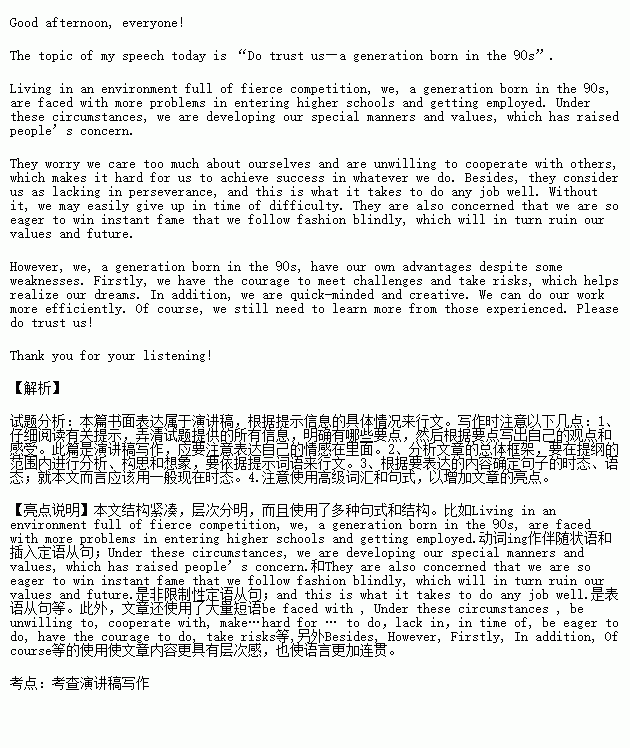ƒøƒ⁄»ð
90∫Û≥ˆ…˙µƒ—ß…˙£¨ÀºœÎÃÿ ‚°¢––Œ™∑Ω Ω∫Õº€÷µπ€¡Ó»Àµ£”«°£ºŸ»Áƒ„ «“ª√˚90∫Û≥ˆ…˙µƒ—ß…˙¡ı¡÷£¨«Î∏˘æ𜬱Ì÷–À˘Ã·π©–≈œ¢“‘"Do trust us-a generation born in the 90s"Œ™Ã‚–¥“ª∆™”¢”Ô—ðΩ≤∏£¨“‘œ˚≥˝»À√«µƒ”«¬«°£
90∫Ûµƒæ≥”ˆ£∫√Ê¡Ÿ∏¸∂ýµƒ…˝—ß∫ÕæÕ“µ∑≥ƒ’£¨À˘¥¶ª∑æ≥æ∫’˘∏¸º”º§¡“°£
»À√«µƒ”«¬«£∫1.◊¢÷ÿ◊‘Œ“£¨«· ”∫œ◊˜£ª......
2.»±∑¶“„¡¶£¨»ð“◊∆¯ƒŸ£ª......
3.√§ƒø◊∑«Û£¨ø Õ˚≥…√˚°£......
Œ“√«µƒ≥§¥¶£∫∏“”⁄ÃÙ’Ω£¨......(«Îøº…˙¡™œµ◊‘º∫ƒ‚∂®ƒ⁄»ð£¨‘Ÿ¡–柡Ω÷¡»˝µ„°£)
¡∑œ∞≤·œµ¡–¥∞∏
œýπÿƒø

